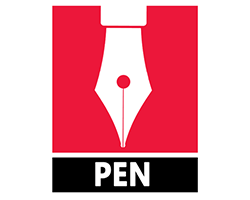- Abid, R., Ghazanfar, S., Farid, A., Sulaman, S. M., Idrees, M., Amen, R. A., Muzammal, M., Shahzad, M. K., Mohamed, M. O., Khaled, A. A., Safir, W., Ghori, I., Elasbali, A. M., Alharbi, B. 2022. Pharmacological Properties of 4’, 5, 7-Trihydroxyflavone (Apigenin) and Its Impact on Cell Signaling Pathways. Molecules 2022, 27, 4304, 1-20. https://doi.org/10.3390/molecules27134304 [Google Scholar] [Crossref]
- Alas, E., Öztekin, G. B., Boyacı, H. F., 2022. Türkiye Patlıcan Üretiminin Mevcut Durumu. Bahçe. 51 (Özel Sayı 1): 435-447. [Google Scholar]
- Anonim, 2022. https://data.tuik.gov.tr/Kategori/GetKategori?p=tarim-111&dil=1 [Google Scholar]
- Anonim, 2023. https://isparta.tarimorman.gov.tr/Belgeler/Faydal%C4%B1%20Bilgiler/%E2%80%8BBitkisel%20Yeti%C5%9Ftiricilik/Sebze%20Yeti%C5%9Ftiricili%C4%9Fi/Patl%C4%B1can%20Yeti%C5%9Ftiricili%C4%9Fi.pdf [Google Scholar]
- Anonymous, 1968. International Federation of Fruit Juice Producers, No: 3. [Google Scholar]
- Ayub, A., Chopra, S., Bhushan, A., Singh, B., Samnotra, R. K., 2022. Varietal Response of Bio-Inoculants on Horticultural Traits and Microbial Population in Aubergine (Solanum melongena L.). Indian Journal of Ecology. 49(5): 1939-1944. https://doi.org/10.55362/IJE/2022/3762 [Google Scholar] [Crossref]
- Cavia-Saiz, M., Busto, M. D., Pilar-Izquierdo, M. C., Ortega, N., Perez-Mateos, M., Muniz, P., 2010. Antioxidant properties, radical scavenging activity and biomolecule protection capacity of flavonoid naringenin and its glycoside naringin: a comparative study. J. Sci. Food Agric. 2010; 90: 1238–1244. DOI 10.1002/jsfa.3959 [Google Scholar]
- Dwivedi, S., Goldman, I., Ortiz, R., 2019. Pursuing the Potential of Heirloom Cultivars to Improve Adaptation, Nutritional, and Culinary Features of Food Crops. Agronomy, 2019, 9, 441, 1-21. doi:10.3390/agronomy9080441 [Google Scholar] [Crossref]
- Eggersdorfer, M., Wyss, A., 2018. Carotenoids in human nutrition and health. Archives of Biochemistry and Biophysics 652 (2018) 18–26. https://doi.org/10.1016/j.abb.2018.06.001 [Google Scholar] [Crossref]
- Ganeshpurkar, A. and Saluja, A., 2020. The pharmacological potential of catechin. Indian Journal of Biochemistry & Biophysics. Vol. 57, 505-511. [Google Scholar]
- Gomes, T., Caponio, F., Alloggio, V., 1999. Phenolic compounds of virgin olive oil: influence of paste preperation techniques. Food Chemistry, 64, 203-209. [Google Scholar]
- Göttingerova, M., Kumsta, M., Rampackova, E., Kiss, T., & Necas, T. (2021). Analysis of Phenolic Compounds and Some Important Analytical Properties in Selected Apricot Genotypes. HortScience, 56(11):1446-1452. https://doi.org/10.21273/HORTSCI16139-21 [Google Scholar] [Crossref]
- Iqbal, K., Khan, A., Khattak, M. M. A. K., 2004. Biological Significance of Ascorbic Acid (Vitamin C) in Human Health – A Review. Pakistan Journal of Nutrition 3 (1): 5-13, 2004. [Google Scholar]
- Kaleci, N., Gündoğdu, M. A., Doğan, E., Nergis, O., 2016. Bazı Yabancı Kökenli Zeytin Çeşitlerinin Olgunlaşma Süresince Pomolojik ve Bazı Biyokimyasal Özelliklerindeki Değişimlerin İncelenmesi. Zeytin Bilimi 6 (2) 2016, 119-124. [Google Scholar]
- Kandoliya, UK., Gajera, HP., Bodar, NP., Golakiya, BA., 2020. Biochemical and molecular characterization of brinjal varieties and promising genotypes of Saurastra region. Journal of Pharmacognosy and Phytochemistry. 9(4): 1550-1558. https://doi.org/10.22271/phyto.2020.v9.i4v.11971 [Google Scholar] [Crossref]
- Kang, K. A., Piao, M. J., Ryu, Y. S., Hyun, Y. J., Park, J. E., Shilnikova, K., Zhen, A. X., Kang, H. K., Koh, Y. S., Jeong, Y. J., Hyun, J. W., 2017. Luteolin induces apoptotic cell death via antioxidant activity in human colon cancer cells. Internatıonal Journal Of Oncology. 51: 1169-1178. 10.3892/ijo.2017.4091 [Google Scholar]
- Kiselev, K.V., Dubrovina, A.S., Veselova, M.V., Bulgakov, V.P., Fedoreyev, S.A., Zhuravlev, Y.N., 2007. The rol-B gene-induced over production of resveratrol in Vitis amurensis transformed cells. Journal of Biotechnology, 128, 681-692. 10.1016/j.jbiotec.2006.11.008 [Google Scholar]
- Kleinhenz M. D., Bumgarner N. R., 2013. Using ºBrix as an İndikatör of Vegetable Quality: An Overview of the Practice. The Ohio State University, Fact Sheet, Agriculture and Natural Resources. HYG-1650-12. 1-4. [Google Scholar]
- Marsic, N. K., Mikulic-Petkovsek, M., Stampar, F., 2014. Grafting Influences Phenolic Profile and Carpometric Traits of Fruits of Greenhouse-Grown Eggplant (Solanum melongena L.). Journal of Agricultural and Food Chemistry. 62, 10504-10514. dx.doi.org/10.1021/jf503338m [Google Scholar]
- Mathesius, U., 2018. Flavonoid Functions in Plants and Their Interactions with Other Organisms. Plants. 7 (30): 1-3. 10.3390/plants7020030 [Google Scholar]
- Nino-Medina, G., Muy-Rangel, D., Gardea-Bejar, A., Gonzalez-Aguilar, G., Heredia, B., Baez-Sanudo, M., Siller-Cepeda, J., Velez de la Rocha, R., 2014. Nutritional and Nutraceutical Components of Commercial Eggplant Types Grown in Sinaloa, Mexico. Not. Bot. Horti Agrobo., 2014, 42(2):538-544. 10.15835/nbha4229573 [Google Scholar]
- Patel, D., Shukla, S., Gupta, S., 2007. Apigenin and cancer chemoprevention: Progress, potential and promise (Review). Internatıonal Journal Of Oncology 30: 233-245, 2007. [Google Scholar]
- Pearson, D., Churchill, A.A. (1970). The chemical analysis of foods. Gloucester Place, London. 233p. [Google Scholar]
- Plazas, M., Nguyen, H. T., Gonzalez-Orenga, S., Fita, A., Vicente, O., Prohens, J., Boscaiu, M., 2019. Comparative analysis of the responses to water stress in eggplant (Solanum melongena) cultivars. Plant Physiology and Biochemistry. 143: 72-82. https://doi.org/10.1016/j.plaphy.2019.08.031 [Google Scholar] [Crossref]
- Samanta, A., Das, G., Das, S. K., 2011. Roles of Flavonoids in Plants. Int. J. Pharm. Sci. Tech. 6 (1): 12-35. [Google Scholar]
- Singleton, V. L. and Rossi, J.A., 1965. Colorimetry of Total Phenolics with Phosphomolybdic- Phosphotungstic Acid Reagents 16, 144-158. http://dx.doi.org/10.5344/ajev.1965.16.3.144 [Google Scholar]
- Slinkard, K. and Singleton, V. L., 1977. Total Phenol Analyses: Automationand Comparison with Manual Methods. American Journal of Enology and Viticulture. 28 49-55. 10.5344/ajev.1977.28.1.49 [Google Scholar]
- Talhouni, M., Sönmez, K., Ellialtıoğlu, Ş. Ş., Kuşvuran, Ş., 2017. Tuz Stresi Altında Yetiştirilen Aşılı Patlıcan Bitkilerinde Bazı Bitki ve Meyve Özelliklerinin İncelenmesi. Akademik Ziraat Dergisi Cilt:6 Özel Sayı:71-80. http://azd.odu.edu.tr [Google Scholar]
|

